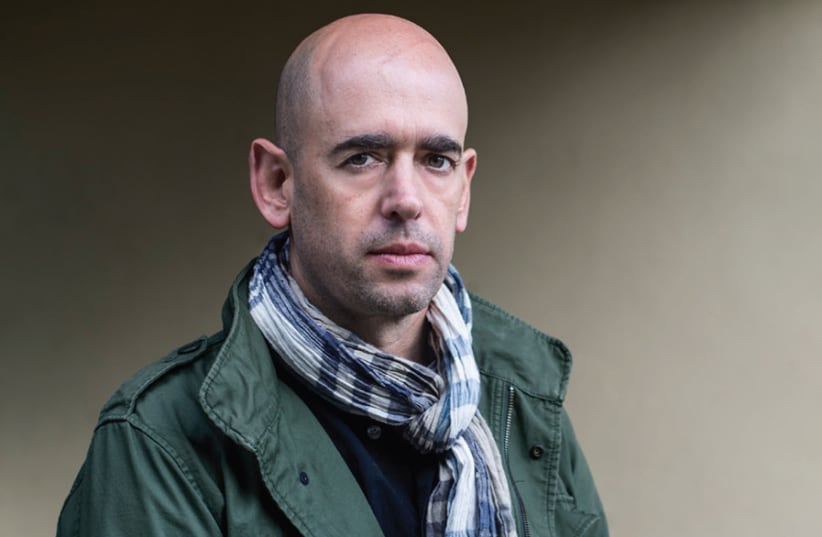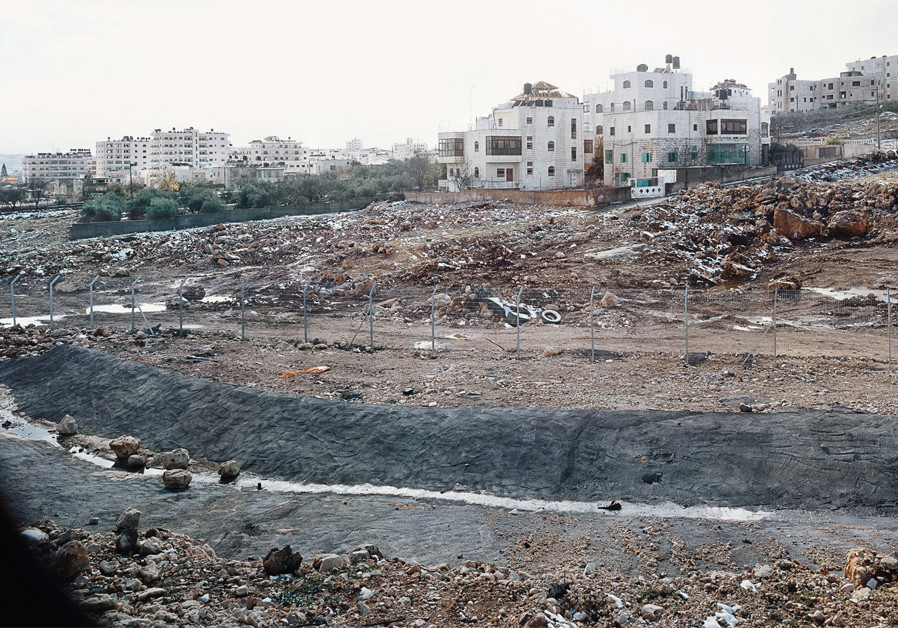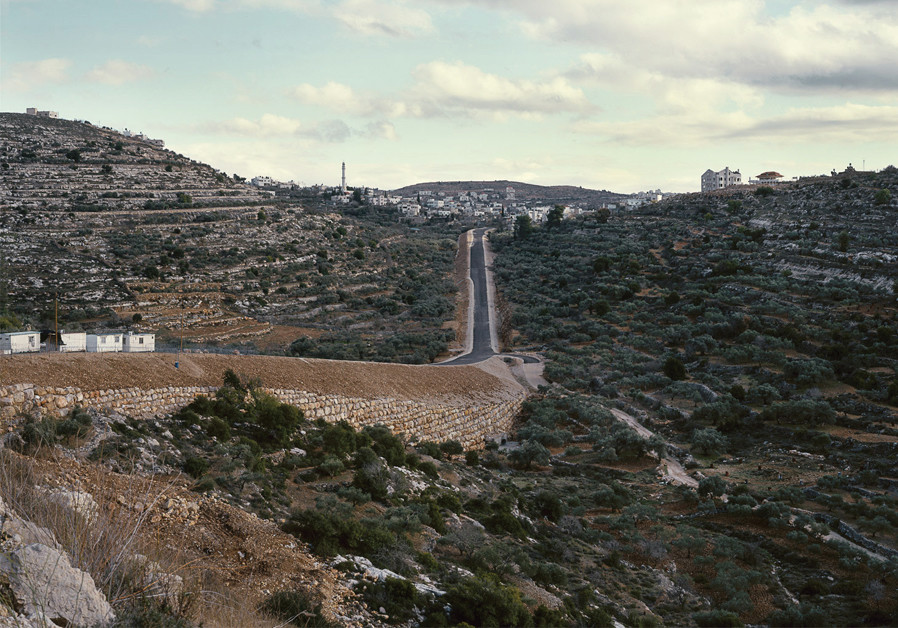Yaakov Israel wants us all to take a considered look around us. As a photographer, that should be a given for him. Then again, even he found himself not really noticing what was clearly in his unimpeded visual line of fire.
In fact, a nasty predicament was the catalyst for forcing Israel into taking a good long hard look at his surroundings, at places he had not previously consciously observed. It was in 2002, a year or so into the Second Intifada, when Israel’s car broke down on Highway 443. With Palestinian villages only a few hundred meters away, anyone driving along the road just kept going. For two long hours, Israel waited by the roadside with his stricken vehicle.
“I thought of calling for a tow truck, but they told me it might take five hours for someone to come and get me,” he recalls.
Israel had actually been driving to a garage, for repairs, but the car gave out before he could it make it into port.
“I knew I had a problem with the car, but I was hoping I could get there before it completely broke down,” he laughs. But they do say that every cloud has a silver lining. In Israel’s case, his surprise payoff eventually materialized as “Legitimacy of Landscape,” an impressive collection of prints – from close to postcard size to gargantuan pictures – currently on show at the Museum of Islamic Art, curated by Dr. Mark Long from the College of Charleston in South Carolina.
Whether he liked it or not, Israel had to take a breather from his scheduled journey.
“In the beginning, I tried to stop people, but after about half an hour, I realized it was pointless.”
Time for some introspection and observation.
“I just stood next to the car and started looking around,” Israel continues. “That got me thinking about the landscape in that area and landscape in general, the way we sort of perceive things or not perceive them.”
That line of thought was also fueled by regional political developments, and where Israel’s car petered out.
“It was the Second Intifada and things were crazy, and Route 443 was, maybe, the manifestation of this. At least that’s how I remember it.”
Israel’s enforced time out also put his train of thoughts into a relevant historical context.
“I started thinking about these places. If you took any Westerner and thought about how they envisage Israel or Palestine, through these sorts of landscapes with the Arab villages in them, if you think about 19th-century photographers like Francis Frith, you can see that even the Old City of Jerusalem is photographed through a sort of village, through the Palestinian landscape, in a way.”
It is, Israel feels, very much down to mindsets and conditioning.
“I thought it was strange that a landscape that very much represents this area is completely ignored by part of the people living here. I don’t want to say the majority of the people, because that might be generalizing too much.”
Precise numbers notwithstanding, Israel’s point is clear.
“A lot of people here live in this sort of escapist bubble and in those years it was very prominent. You drove between Jerusalem and Tel Aviv as quickly as possible – just keep your eyes on the road, driving at 120 or 140 kph, trying to ignore whatever’s around you.”
AT THIS point of our conversation, things got a little philosophical – something along the lines of whether a tree falling in a forest, where there is no one around to hear the crash, actually makes a sound. If something is not perceived or recognized does that make its existence a matter of pure conjecture?
“I think, in a way, part of the people try not to see them [the Arab villages] so they don’t need to think about it. That got me thinking about what happens to a landscape that is ignored by a lot of people,” Israel notes. “Does it still exist? I don’t think you can answer that in general, and certainly not through photography, but that was what generated this project. It got me thinking that I should start looking at these places and I started looking at them through photography.”
It’s not that Israel did not get why, at the time, motorists were keen to just floor it and get wherever they were headed ASAP.
“I was also scared at the time. There were a lot of stones being thrown, firebombs and there were even a few shootings at the road. I was thinking, how was I going through these places at that time? And then you get stuck there with your car and that sort of shifts your reality around.”
Meanwhile, out there on Route 443, Israel was concerned for his own safety and faced a long wait for the tow truck to get to him. In the event, help came from a very different quarter, and sooner than the photographer had expected.
“After a couple of hours, a car mechanic from east Jerusalem stopped, shifted the batteries between our cars, drove with me to the garage, switched the batteries back and didn’t take a penny for his efforts. I thanked him and off he went.”
Another reality shaker.
“The guy at the garage I got to said to me, “You see, sometimes interesting things happen. It was a time when everything was crazy.”
Israel may have had a car breakdown-induced epiphany of sorts, but it still took a while before he got up to speed with what eventually became “Legitimacy of Landscape.” He’d taken a handful of pictures of Arab villages and then found himself in Jerusalem viewing similar human and constructional spreads.
“At that time, I didn’t think of starting a project. I was just thinking about how these places exist. I’d made one image and I looked at it a bit. Then I encountered another interesting point on the bridge that goes over Beit Safafa, between the Katamonim and Talpiot. I was thinking of taking photographs of Katamonim, which is part of the southwest Jerusalem project that I have been doing since I was a student. Then I noticed how the buildings and the village become one. I thought we are really entwined here, our lives are really connected.”
Israel did not make do with just casting a thoughtful eye over the landscape.
“I started asking the people there how it is to live together, and I found out that people get along really well in that area.”
“Legitimacy of Landscape” had begun to gestate, although still a little under the radar.
“I didn’t think of it as I’m starting a project. I just start looking,” Israel notes. “Then I started photographing and then, slowly, I noticed it was becoming something. That’s why it took so long,” he laughs. “I started, also, thinking about my existence here.”
IF ONE were to place Israel on any side of the political divide, he would tend towards the Left. Hence, one might have thought that he would be more alert to life over on the Palestinian side of the Green Line. But even he needed a wakeup call to start taking a more focused, human, approach to his neighbors.
“Political awareness grows on you,” he observes. “I grew up in a house where my father was originally from Rhodesia and very anti-apartheid, and my mother came from South Africa, very anti-apartheid. Human rights issues were something we talked about at the Shabbat table. I didn’t think of it much as a kid, but now when I think back, it probably made me who I am.”
Over time, Israel began to home in on the minutiae. It wasn’t just a matter of casting an eye across unknown vistas. He wanted to dig into the subtext of daily life over there in a sensitive and non-interventionist manner. The exhibition includes some enormous prints, measuring over four meters by two meters, which, if you have the time and patience, allows for some zeroing in on plain old daily life in some Palestinian community.
“Look, you can see a woman there on the balcony and there’s a man crossing the road,” Long remarks. “It’s kind of a surrogate for being in the landscape.”
If you take the time, the exhibition can be an immersive experience.
Israel traveled far and wide to capture the images that make up the exhibition. It wasn’t just about retracing his car breakdown steps to document the Palestinian villages near Route 443, many of which are now partly, or completely, obscured by the security wall. Israel also lugged his unwieldy photographic equipment into some villages, often attracting crowds and engaging in lively discussion.
Using an ultra-large 10-inch-by-8-inch photography format enabled Israel to produce high-resolution prints that could be blown up to grand dimensions. That also helps to get the observer on board.
“It’s a hyper-realistic image,” says the photographer. “That allows us to look at the landscape that in reality we could not. The human eye cannot see as well as a camera in this situation. Also, I am using aesthetic values that sort of seduce people to want to look – to let the politics and social implications surface.”
Some of the exhibits convey a sense of traveling back in time to an era in which the Levant was often romanticized by the so-called Orientalists. Israel frequently employed a one-third sky/ two-thirds ground compositional format reminiscent of classic 19th century photography. Indeed, quite a few of the images might have been taken in bygone years, if not quite as long ago as when the likes of Frith, Felix Bonfils and Francis Bedford were doing the rounds here capturing images for an unknowing audience back in Western Europe and the United States.
That is partly down to Israel’s “ulterior motive” to draw us in to the visual and political milieu on show.
“Most of the images don’t have the separation wall so evident within them,” he says. “I am trying to make subtle work that, within the images, you slowly start to accumulate an understanding of what it is about. These aren’t one-liners. This is really what I am trying to do. I want people to look at the images and then slowly the ideas, the sociopolitical ideas, surface. It’s not just an image.”
Even without the aforesaid cerebral undercurrents, the variegated works in “Legitimacy of Landscape” make for a fascinating aesthetic experience, and you may even go home with some food for thought.
Legitimacy of Landscape closes on April 27. For more information: (02) 566-1291 and www.islamicart.co.il.


